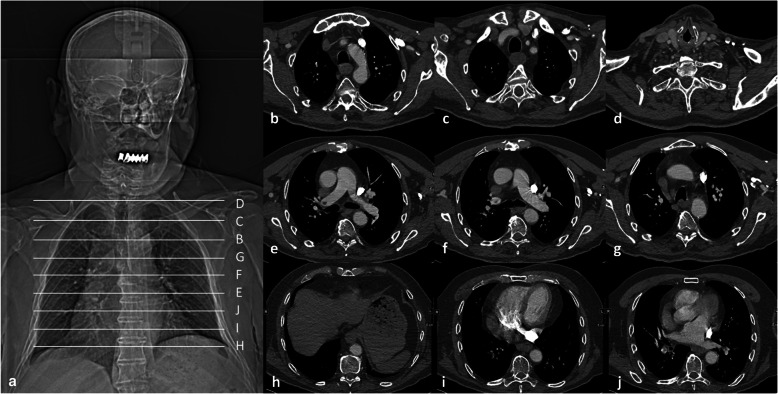Fig. 1.
Examples of anatomical landmarks on axial CT angiography source images. a Shows a topogram of a CT angiography with reference lines corresponding to anatomical landmarks depicted in (b-j). Axial CT angiography images at the level of the aortic arch (b), supra-aortic vessels (c), cervical arteries (d), main pulmonary artery (e), carina (f) and ascending aorta (above the carina (g). The diaphragm and abdominal organs are shown in (h), the ventricles and left atrium in (i) and (j). Note: Depending on the level of the most caudal axial image the following lung segments are usually, at least partially, covered by CT angiography: B = right: 1–3, left: 1 + 2 and 3; C = right: 1 and 2, left: 1 + 2; D = no lung tissue; E = right: 1–3 and 6, left: 1 + 2, 3, 4 and 6; F = right: 1–3 and 6, left: 1 + 2, 3 and 6; G = right: 1–3, left: 1 + 2, and 3; H = right: 1–10, left: 1–10; I = right: 1–10, left: 1–10; J = right: 1–6, left: 1–6, and 8

